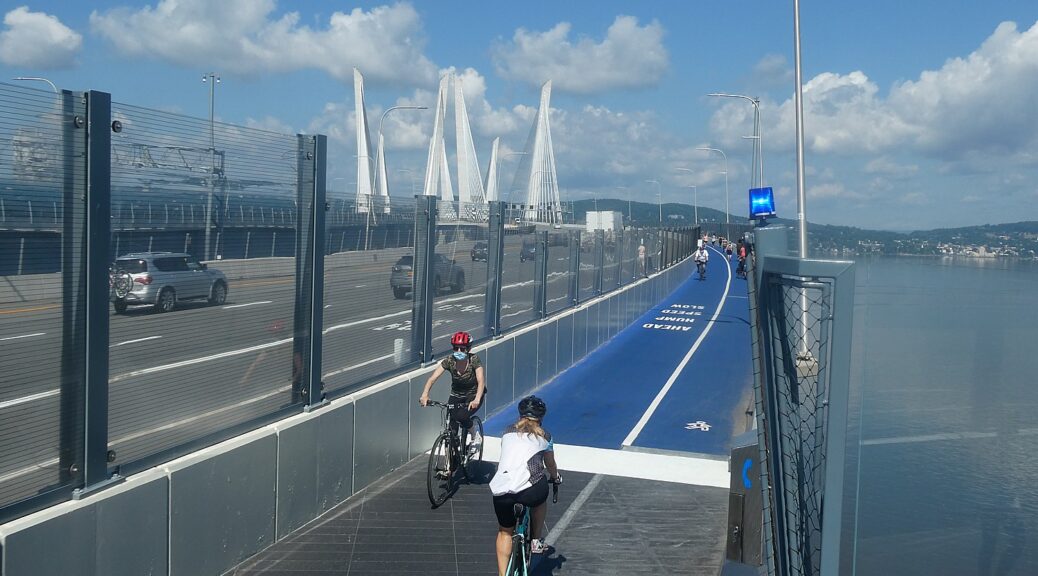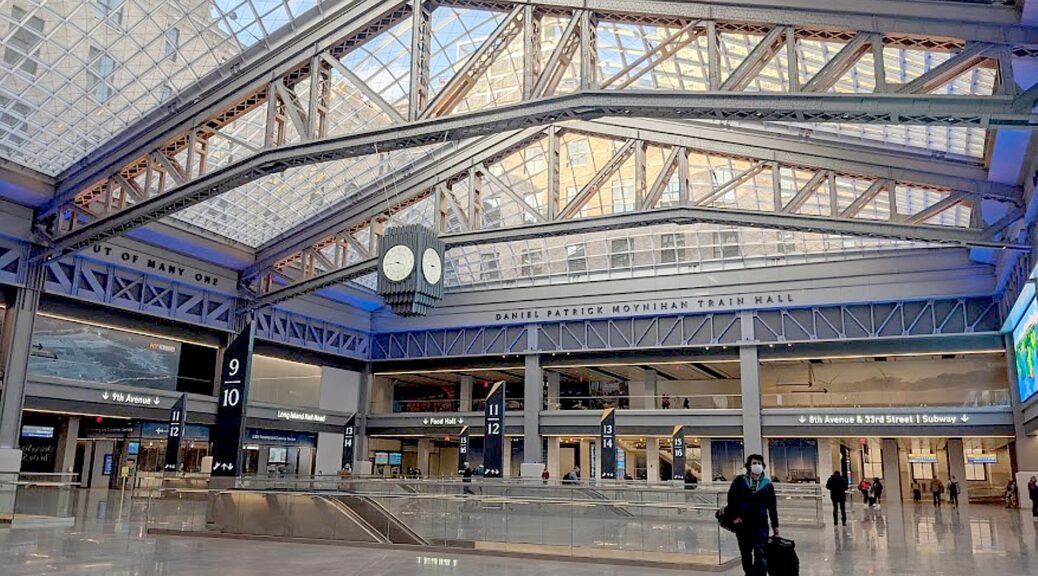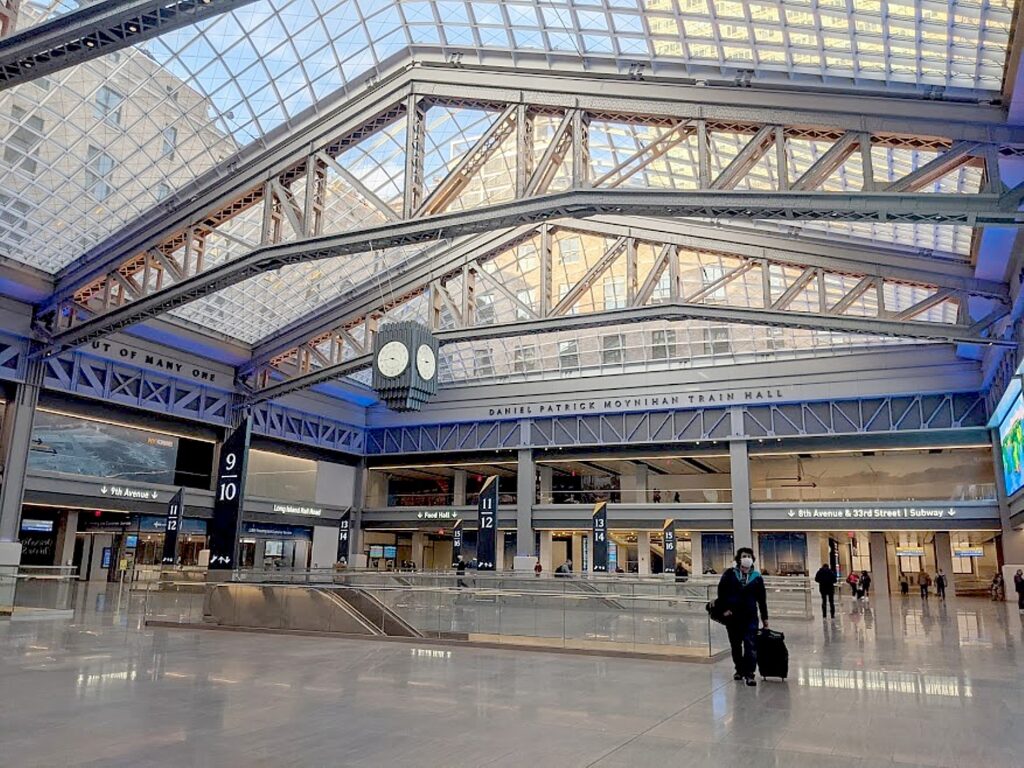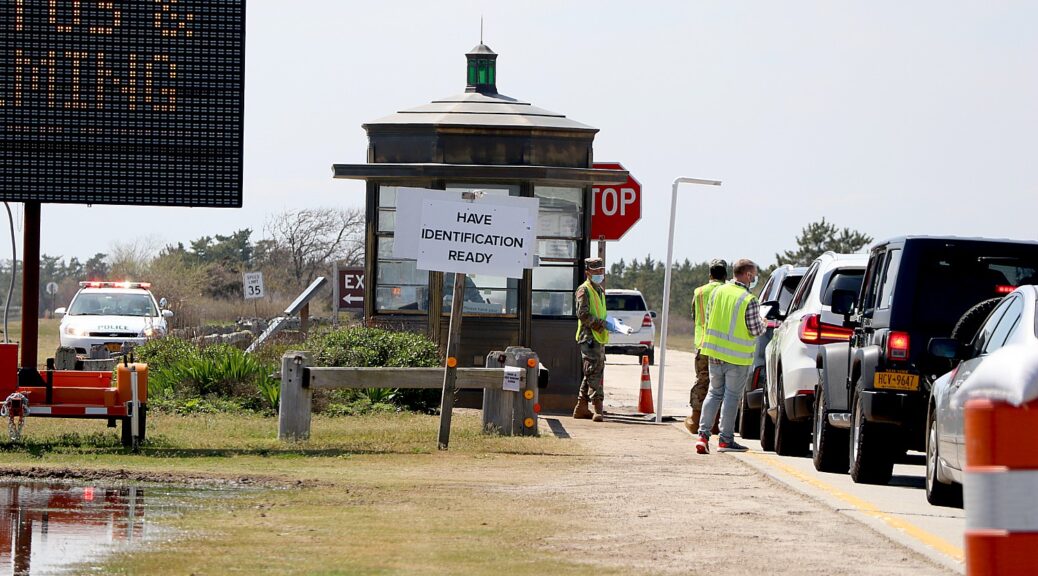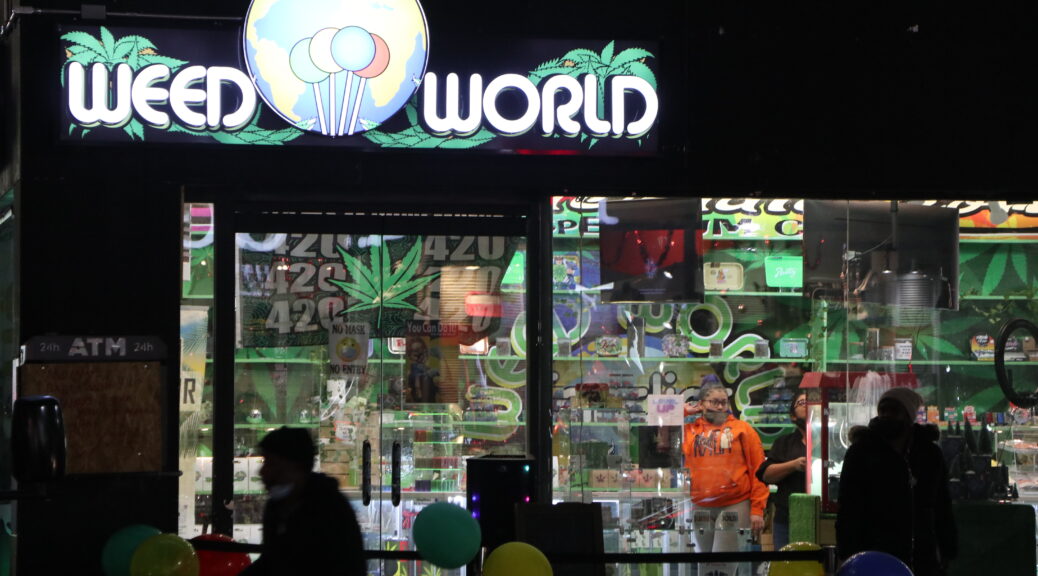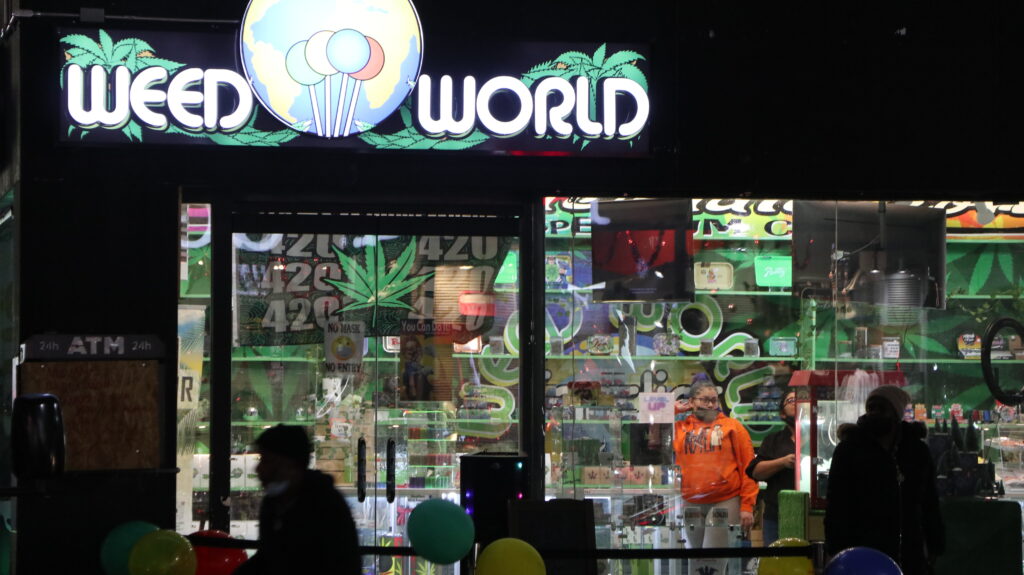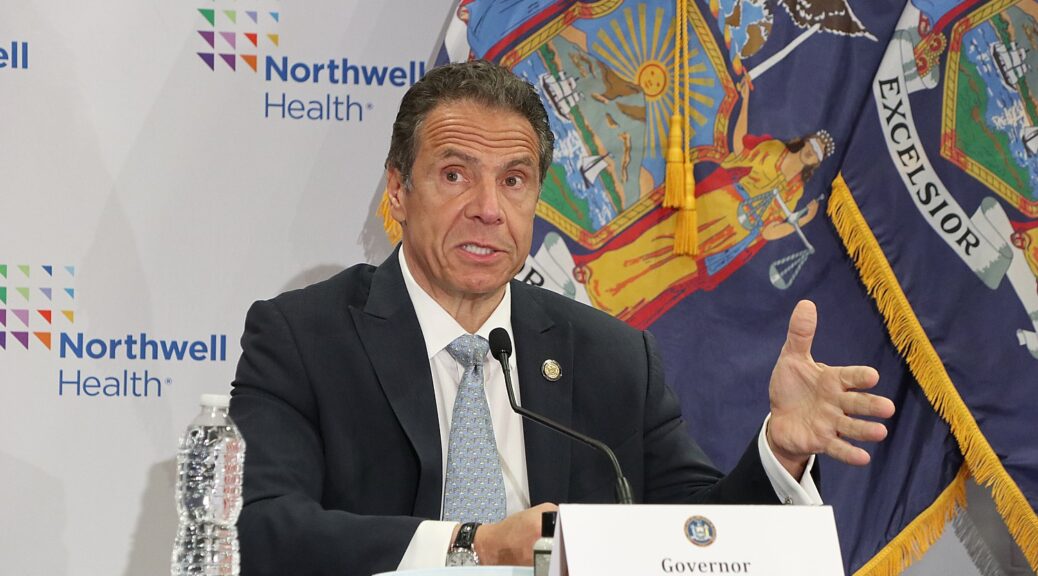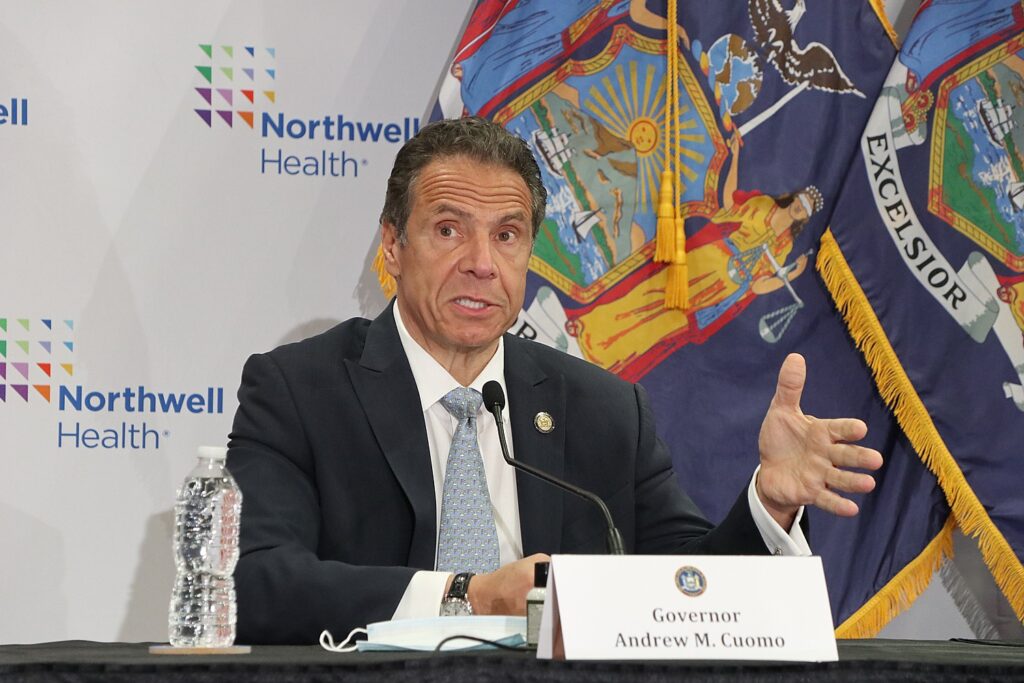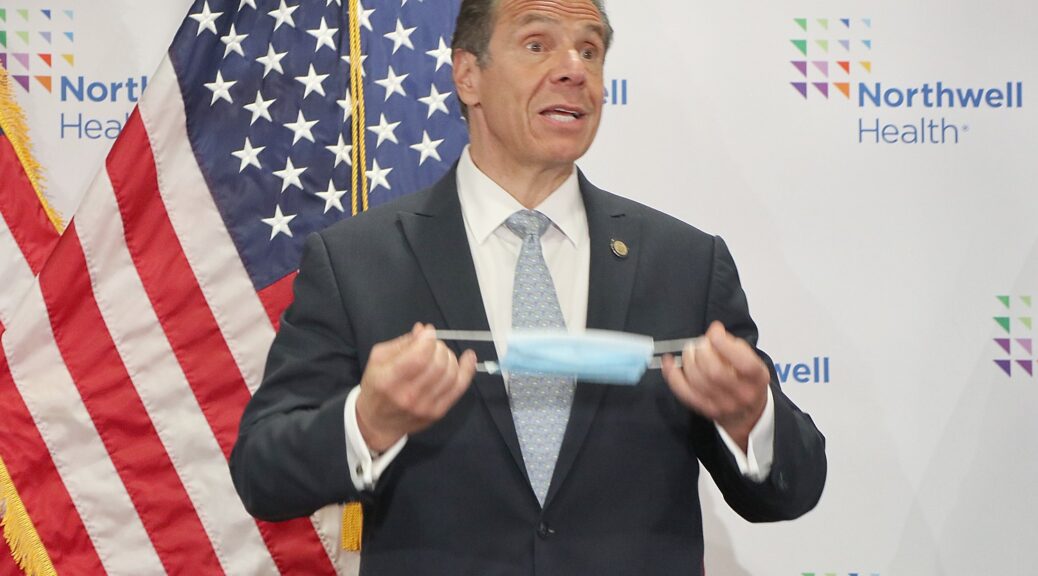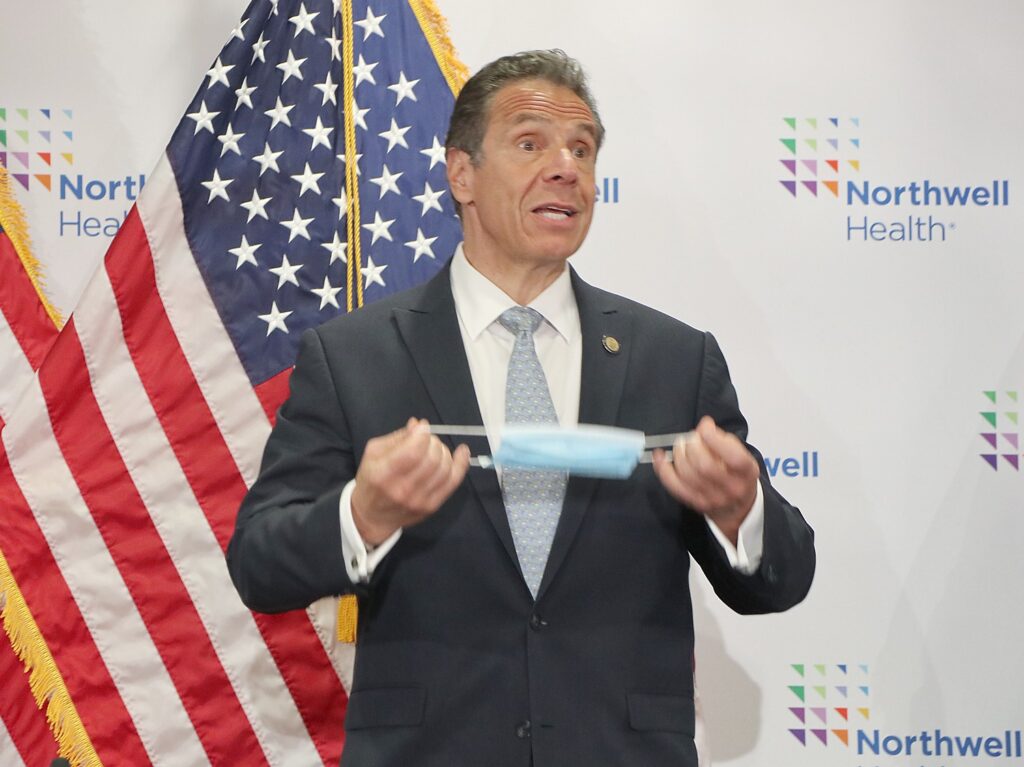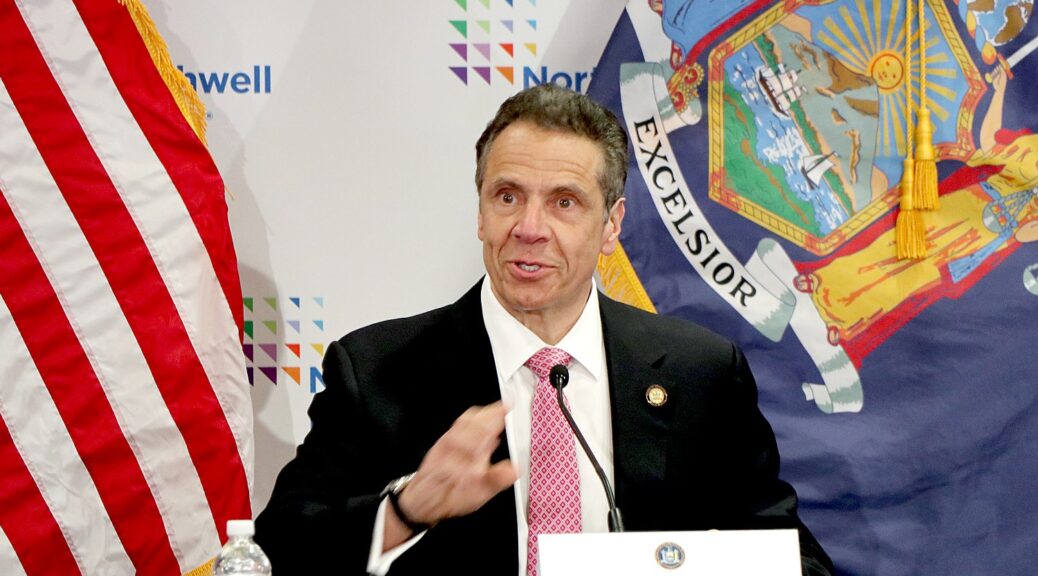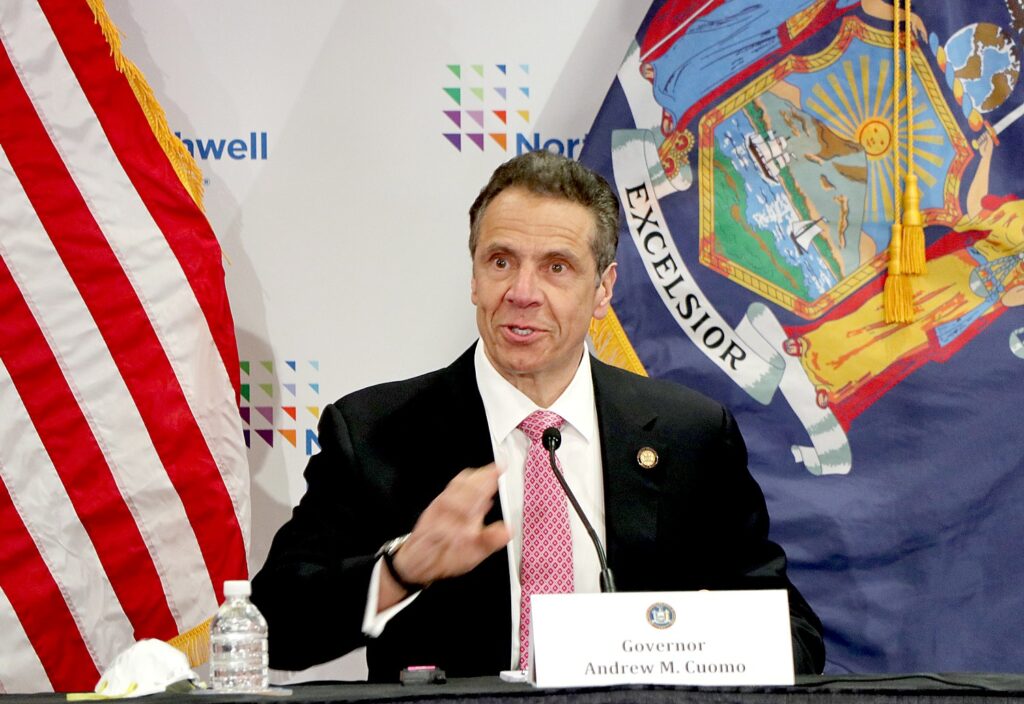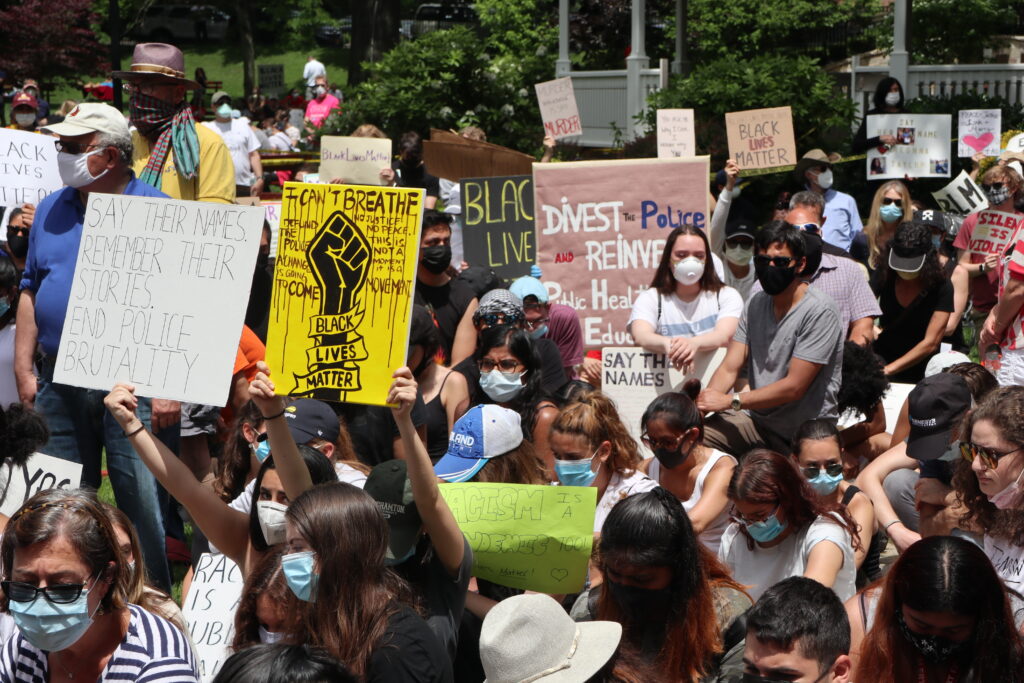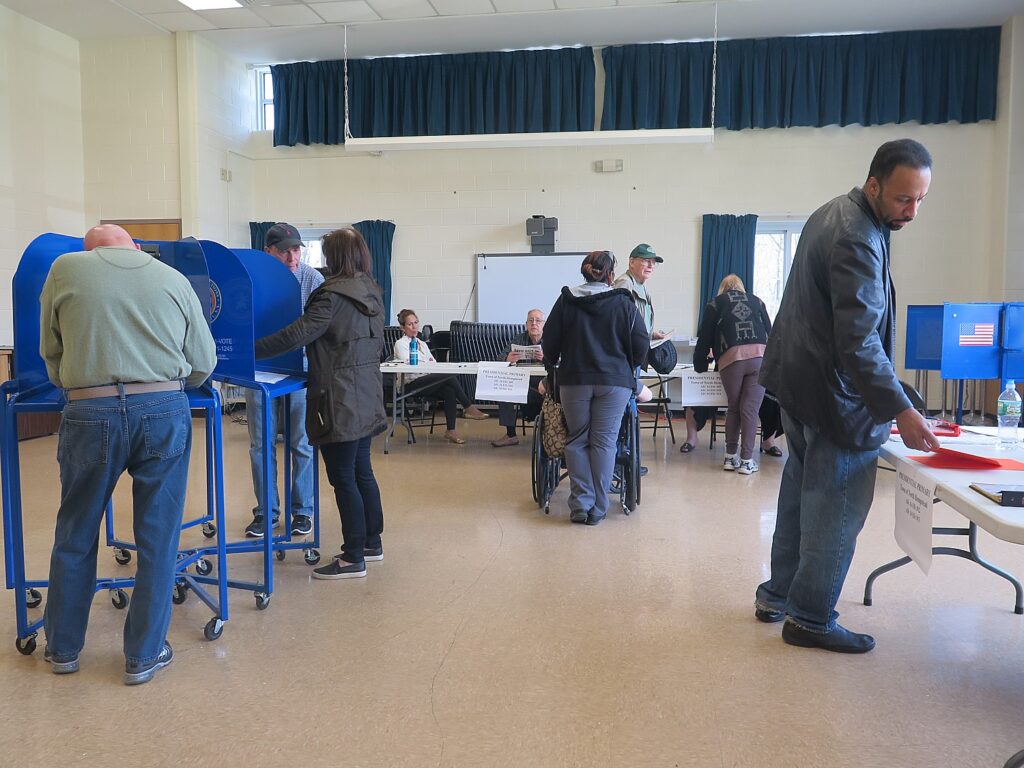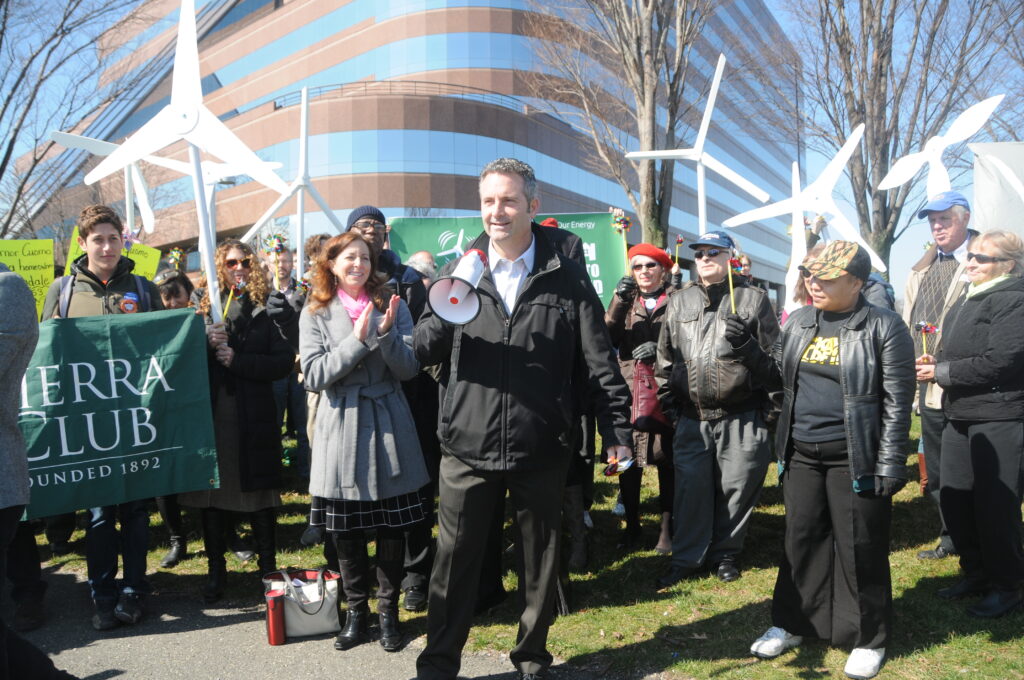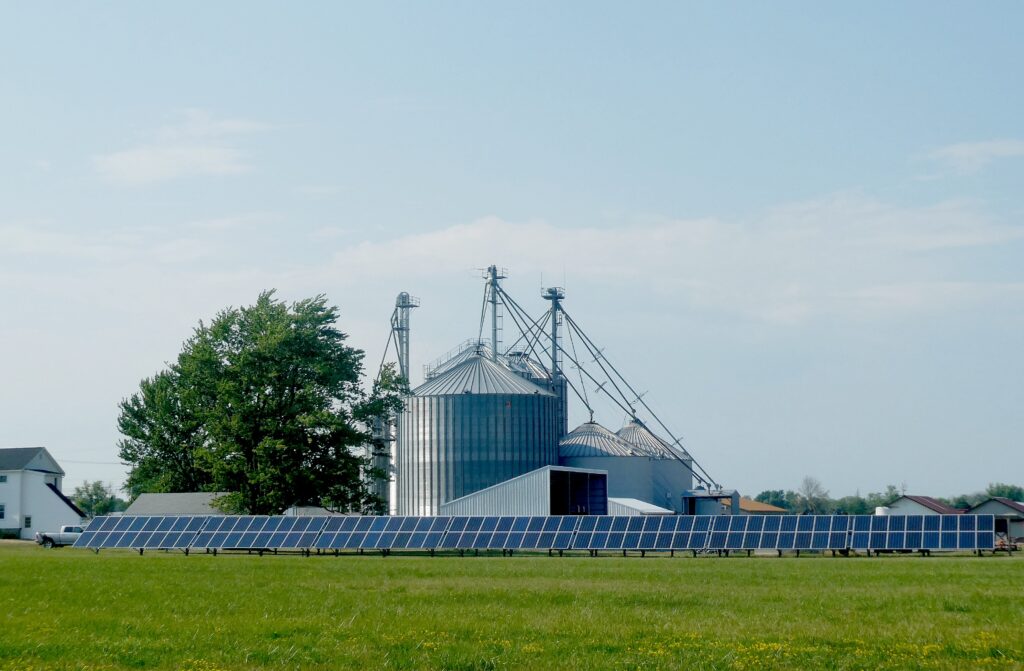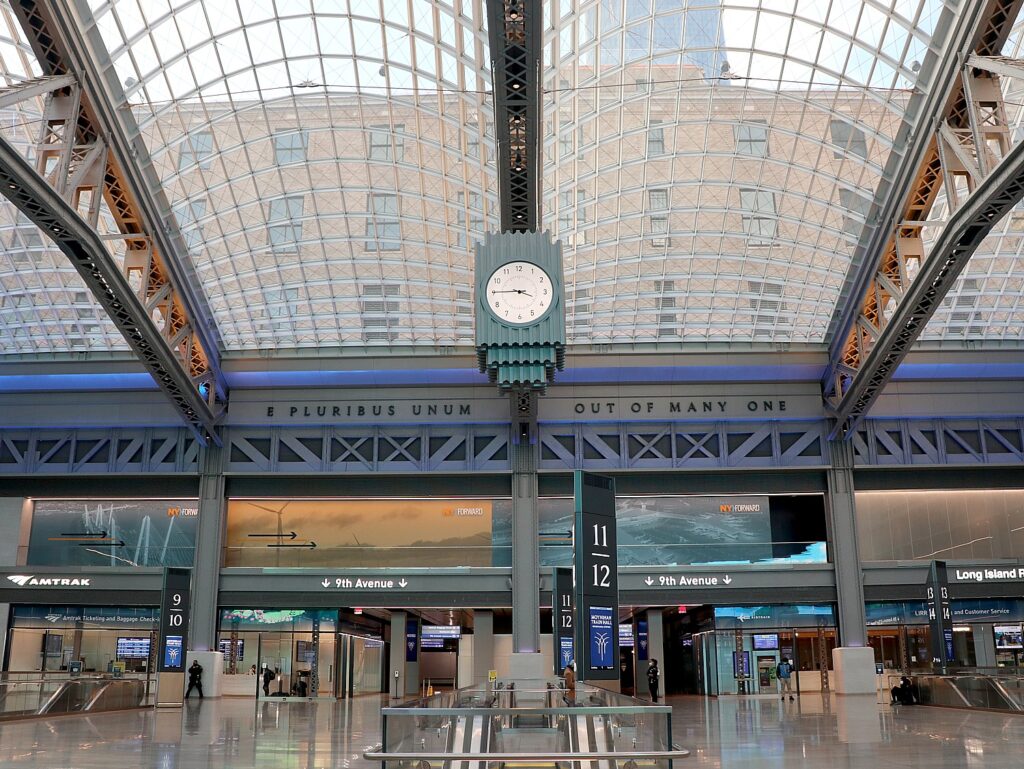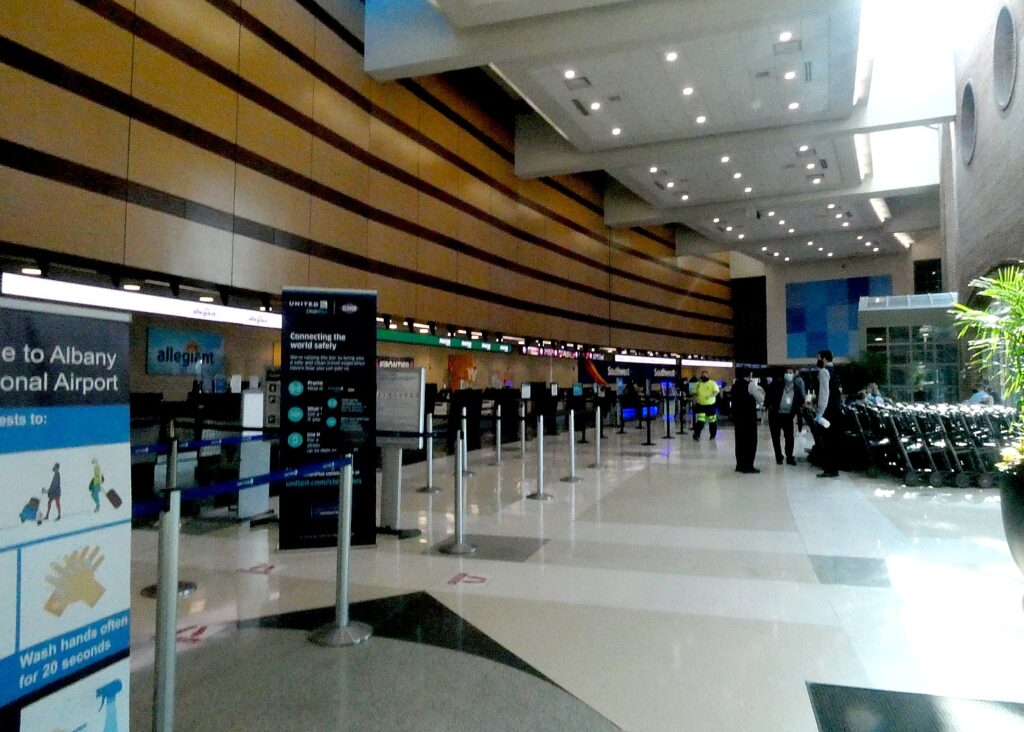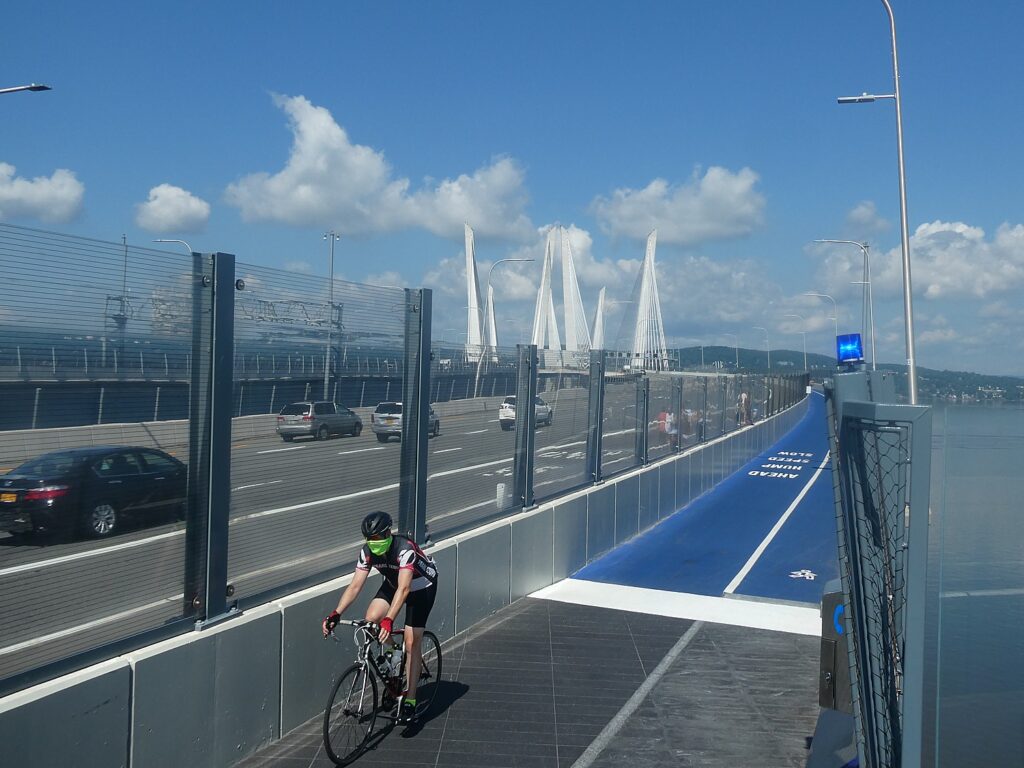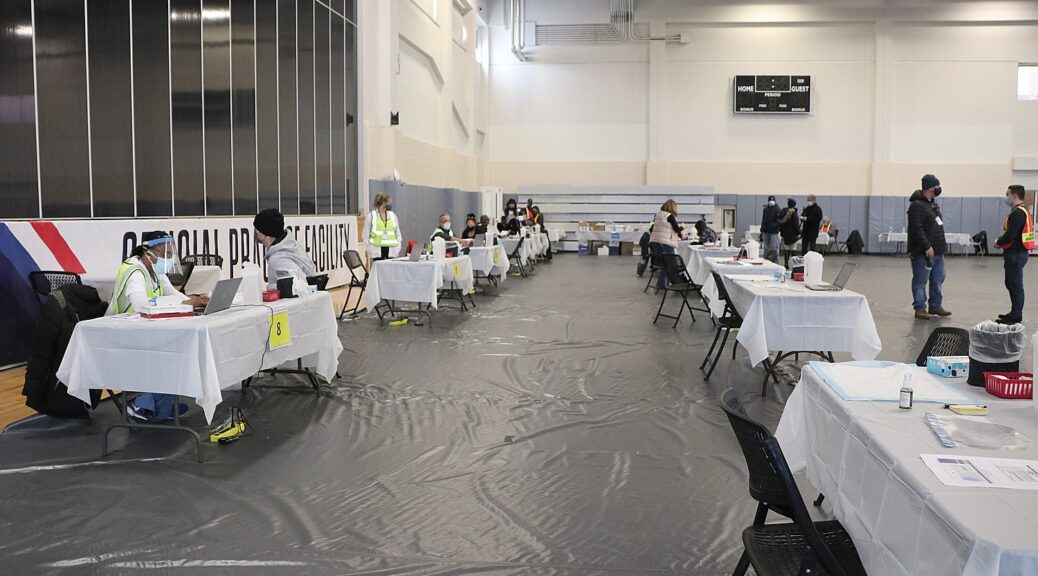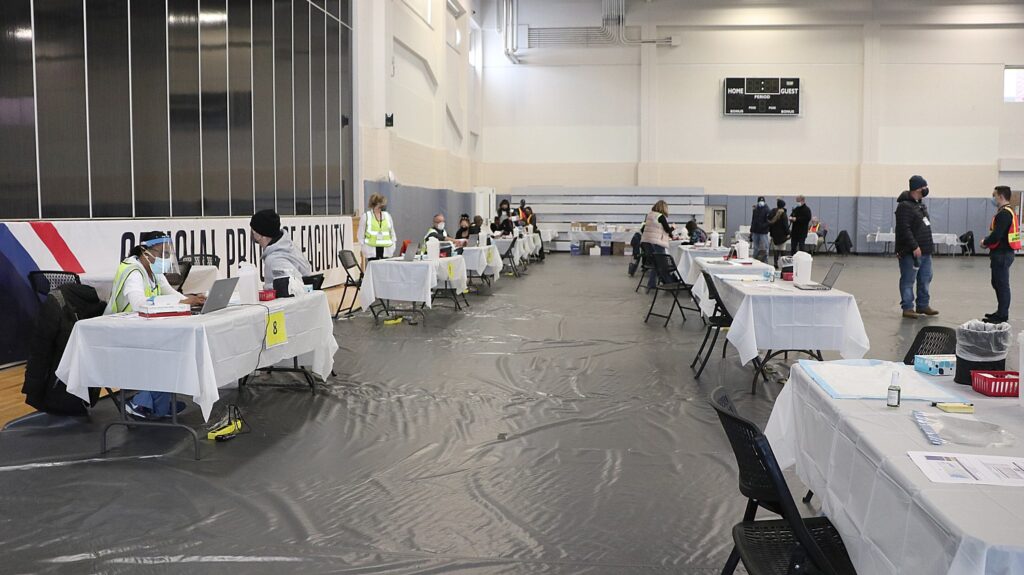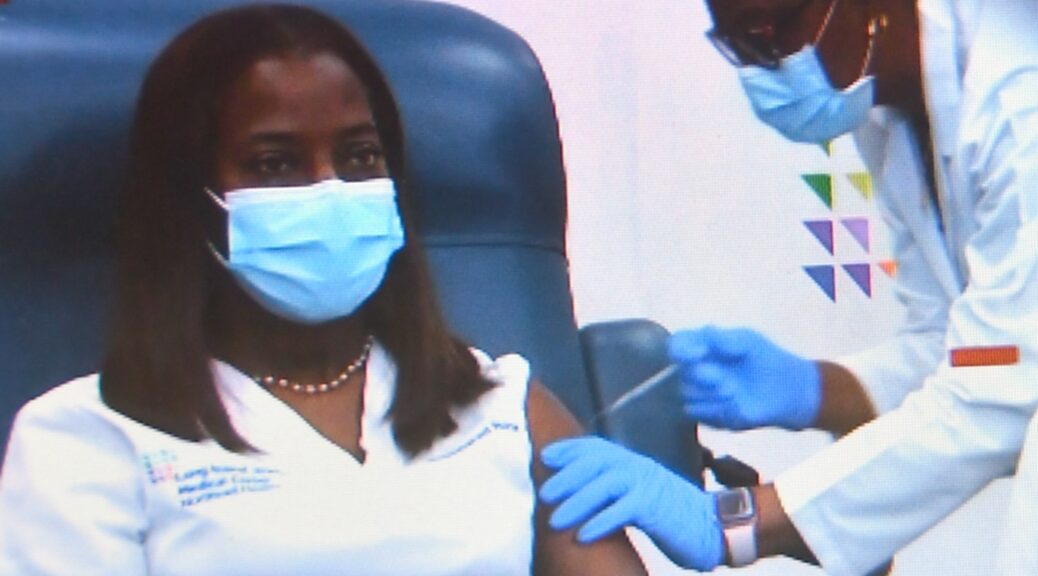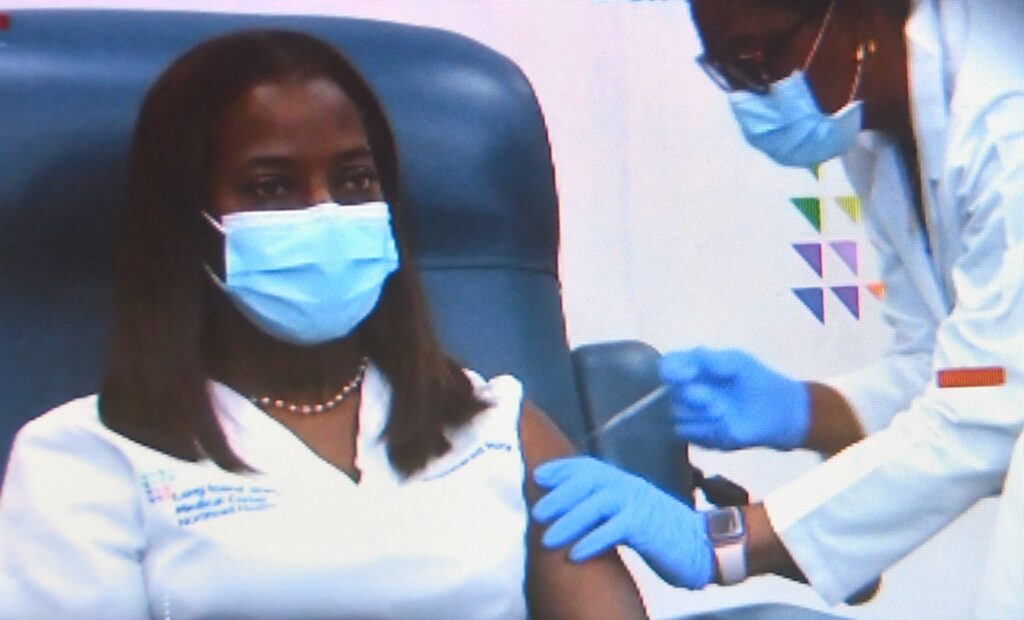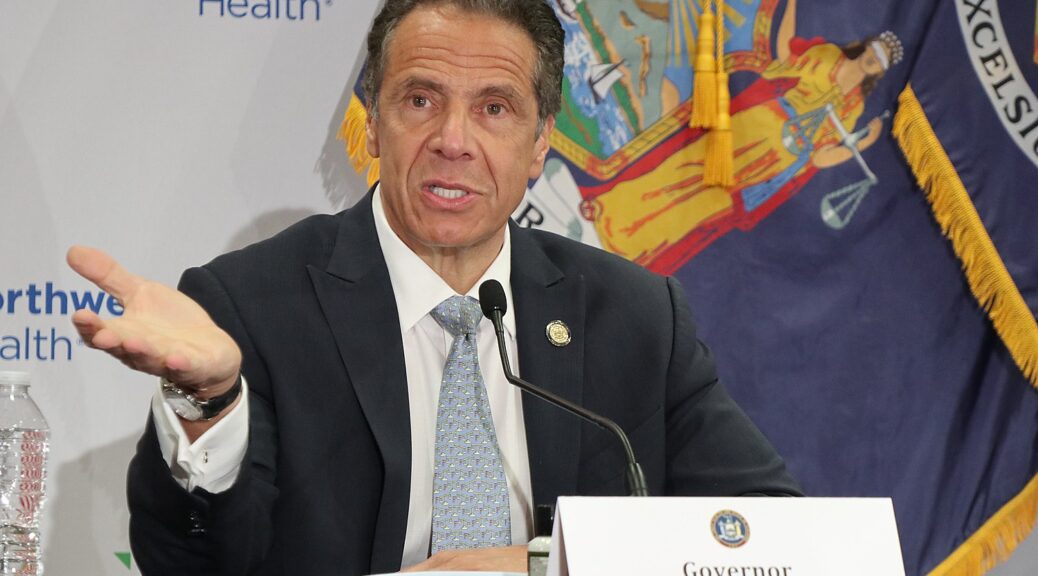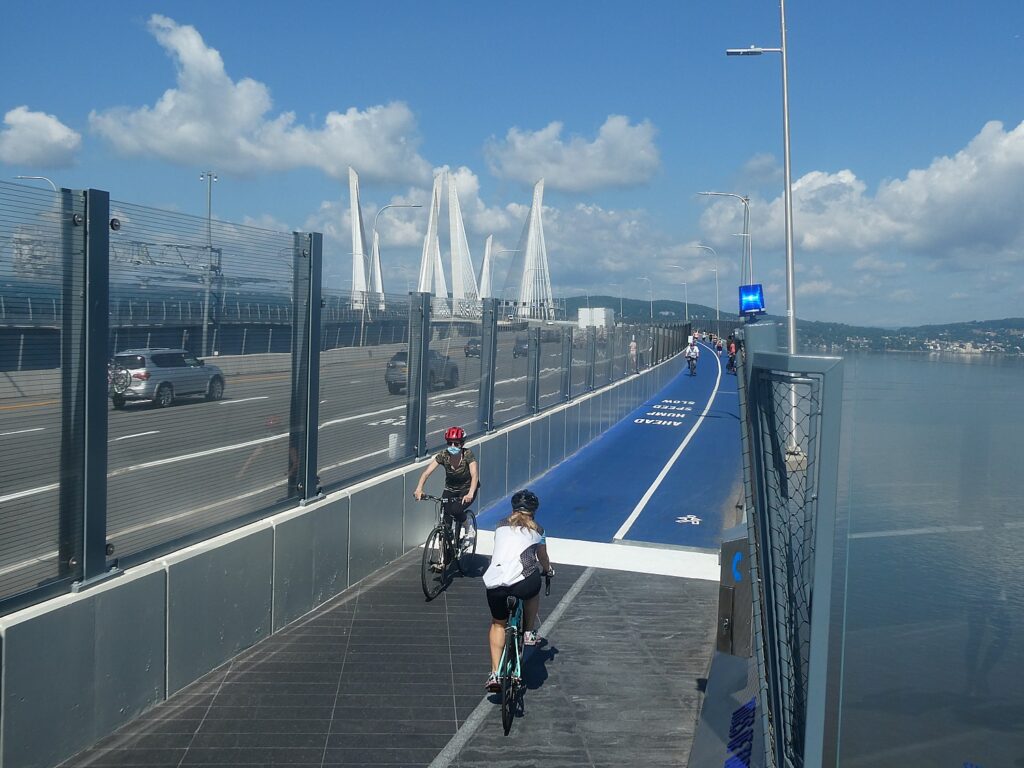
$311 Billion Infrastructure Plan – Largest in the Nation & Most Expansive in State’s History – Will Create Thousands of Jobs Across the State
First-in-the-Nation Program to Make Broadband Internet Affordable – $15 Broadband Plans Must Be Offered to Low-Income Families
Enhances Public Safety by Authorizing the Withholding of 50 Percent of State and Federal Funds from Jurisdictions that Fail to Produce a Police Reform Plan; Requires the Attorney General to Appoint a Monitor to Ensure Safe Policing
Directs $2.3 Billion in Federal Child Care Resources to Expand Availability, Quality and Affordability of Child Care Across the State; Enacts Employer Child Care Credits
$29 Billion in Public and Private Green Economy Investments
Establishes Prevailing Wage & Buy American Requirement
Protects Renters by Creating $2.4 Billion Rent Relief Program
Enhances Quality of Care at Nursing Homes with Patient-Centered Reforms
Provides $1 Billion in Small Business and Arts Relief and Recovery Assistance
Enacts Middle Class Property Tax Credit and Continues Middle Class Tax Cut; Expected to Save 4.8 Million New Yorkers Over $2.2 Billion This Year
$29.5 Billion School Aid, 11% Increase, Record Funding
Governor Led National Effort for State and Local Federal Funding with New York State Receiving $12.6 Billion; Budget Closes Remaining Gap; Adds $3.5 Billion in Tax Revenue and Invests in COVID Response and Recovery
Governor Andrew M. Cuomo today announced highlights of the FY 2022 Enacted Budget to reimagine, rebuild and renew New York in the wake of the ongoing COVID-19 pandemic.
The Budget supports the Governor’s $311 billion infrastructure plan – the largest in the nation and the most expansive in State’s history – that will create thousands of jobs across the State.
The Budget establishes a first-in-the-nation program to provide affordable internet by requiring internet service providers to offer an affordable $15 per month high-speed internet plan to qualified low-income households.
The Budget enhances public safety by authorizing the withholding of up to 50 percent of State and Federal funds from jurisdictions that fail to produce a police reform plan and comply with the Governor’s Executive order. The Governor may require that the Attorney General appoint a monitor over the police force until the plan is adopted.
The Budget directs $2.3 billion in federal child care resources to expand availability, quality and affordability of child care across the state, and enhances the Employer Provided Child Care Credit to provide meaningful incentives to employers to help them provide child care to their employees.
The Budget supports $29 billion in public and private green economy investments to create 12,400 megawatts of green energy – enough to power 6 million homes – helping to fulfill the goals of New York’s Climate Leadership and Community Protection Act and also spur the COVID economic recovery. The investments include the largest offshore wind program in the nation, plans to make New York a global wind energy manufacturing powerhouse, constructing a green energy transmission superhighway, a public-private partnership to build nearly 100 renewable energy projects and supporting transit agencies’ transition to electric busses.
The Budget ensures that New York uses Buy American principles in manufacturing of renewable components. The Budget also requires prevailing wage for construction labor peace agreements for operations and manufacturing.
The Budget ensures access to fair and safe housing and protects renters by establishing a $2.4 billion rent relief program using Federal and State funds.
The Enacted Budget includes comprehensive nursing home reform legislation to help ensure facilities prioritize patients over profits, establishing minimum thresholds for nursing home spending on direct resident care and staffing, and investing $32 million annually to implement the reforms, while capping profits and performing related party transactions to drive funding to where it matters most, the patients.
The Budget enacts small business and arts relief and recovery assistance, a robust $1 billion relief package for small businesses, arts, entertainment and restaurant relief to help them recover from the impacts of the pandemic. It includes $865 million in grants and $139 million in tax credits.
The Budget also continues the phase-in of the middle class tax cut, which is expected to save 4.8 million New Yorkers over $2.2 billion this year.
From the beginning of the pandemic, Governor Cuomo led the national effort to secure Federal funding for state and local governments, with New York State receiving $12.6 billion in aid to help offset devastating revenue losses caused entirely by the pandemic. With this Federal funding and additional revenues, including $3.5 billion in new tax revenue that rises to $4.3 billion in FY 2023, the Enacted Budget closes the deficit and invests in the ongoing response to the pandemic and recovery efforts.
“New York was ambushed early and hit hardest by COVID, devastating our economy and requiring urgent and unprecedented emergency spending to manage the pandemic,” Governor Cuomo said. “Thanks to the State’s strong fiscal management and relentless pursuit to secure the federal support that the pandemic demanded, we not only balanced our budget, we are also making historic investments to reimagine, rebuild and renew New York in the aftermath of the worst health and economic crisis in a century. This budget continues funding for the largest-in-the-nation $311 billion infrastructure plan, establishes a groundbreaking program to provide affordable internet for low-income families and enhances public safety through police reforms, all while continuing to provide relief to New Yorkers and small businesses as we recover from the pandemic. I thank the legislative leaders – Senate Majority Leader Stewart-Cousins and Assembly Speaker Heastie – for their partnership in helping make this critical budget a reality and delivering results for the people of this state.”
Fiscal Highlights of the FY 2022 Enacted Budget:
- State Operating Funds spending is $111 billion
- All Funds spending $212 billion for FY 2022
- Applies $5.5 billion in federal aid
- Provides $29.5 billion in School Aid, a $3 billion, 11% increase.
- Provides $7.7 billion in State support for higher education in New York
2022 REIMAGINE | REBUILD | RENEW ENACTED BUDGET HIGHLIGHTS
$311 Billion Infrastructure Plan: New York’s $311 billion infrastructure plan includes the Governor’s $211 billion 2020-24 plan and his $100 billion 2015-2019 plan. The evolving plan increased by $36 billion in the budget with the inclusion of new, key elements of the Midtown West Redevelopment of New York City beginning with Penn Station, Belmont Station Redevelopment, a $3 billion environmental bond act, transportation programs, and additional supportive, affordable, and public housing support, along with incremental adds to existing capital programs.
First-in-the-Nation Affordable Internet for Low-Income Families: The FY 2022 Enacted Budget includes first-in-the-nation legislation requiring internet service providers to offer an affordable $15 per month high-speed internet plan to qualifying low-income households. The State will also require providers to advertise this plan to ensure programs reach underserved populations across the State. To further bridge the gap, the State has partnered with Schmidt Futures and the Ford Foundation to launch ConnectED NY, an emergency fund to provide approximately 50,000 students in economically disadvantaged school districts with free internet access through June 2022.
Police Reform Plans: The FY 2022 Enacted Budget authorizes the withholding of up to 50 percent of state and federal funds from jurisdictions that fail to produce a police reform plan and comply with the Governor’s Executive Order 203, the New York State Police Reform and Reinvention Collaborative. It also requires the Attorney General to install a monitor until the jurisdiction is compliant, if the Governor directs.
Expand Child Care Availability and Affordability: The FY 2022 Enacted Budget directs $2.3 billion in Federal child care resources to expand the availability, quality and affordability of child care. Increases in child care subsidies will expand access, co-pays would be lowered to not more than 10% of family income above the poverty level and essential workers would receive child care tuition support. Child care providers would receive $1.3 billion in stabilization grants to support expenses, as well as additional funds for cleaning and safety. Further investments would be made to increase capacity in child care “deserts” and help parents find the child care provider that’s right for them.
Enact Employer Child Care Credits: The FY 2022 Enacted Budget enhances the Excelsior Jobs Program and Employer Provided Child Care Credit, providing meaningful incentives to employers to help them provide much needed child care to their employees. The Excelsior Jobs Program is enhanced to allow for an expanded up to five percent Investment Tax Credit component and a credit up to six percent of ongoing net child care expenditures provided by the credit recipient. The Employer Provided Child Care Credit is also enhanced by doubling the current credit percentages to 50 percent of qualified child care expenditures and 20 percent of qualified child care resource and referral expenditures while increasing the per taxpayer cap from $150,000 to $500,000.
$29 Billion in Public and Private Green Economy Investments: Under Governor Cuomo’s leadership, New York will embark on an ambitious Green Energy program that will spur more than $29 billion in public and private investment across the state and create 12,400 megawatts of green energy – enough to power 6 million homes. These investments will not only shift the state to a carbon neutral economy, fulfilling the goals of New York’s Climate Leadership and Community Protection Act, but also spur the COVID economic recovery. The investments include the largest offshore wind program in the nation, plans to make New York a global wind energy manufacturing powerhouse, constructing a green energy transmission superhighway, a public-private partnership to build nearly 100 renewable energy projects and supporting transit agencies’ transition to electric busses.
Provide $2.4 Billion to Protect Renters: The FY 2022 Enacted Budget creates a $2.4 billion Emergency Rental Assistance Program (ERAP) to ensure New Yorkers can make rent and remain stable in their homes. The program will support households in rental arrears that have experienced financial hardship, are at risk of homelessness or housing instability and that earn less than 80 percent of area median income. The program would prioritize those with the lowest incomes, the unemployed and other vulnerable populations. Renters in the program will also be eligible to receive relief for utility arrears. The program is funded by $2.3 billion in Federal resources and $100 million of State resources to supplement the core program and target those facing hardship that may not otherwise be eligible. The program will be structured to enable coordinated efforts between the State and the local governments that opted to receive funds directly – leveraging resources, gaining efficiencies and preventing fraud.
Enhancing Nursing Home Quality of Care: The Enacted Budget includes comprehensive nursing home reform legislation to help ensure facilities are prioritizing patient care over profits. These reforms establish minimum thresholds for nursing home spending of 70 percent of revenues on direct resident care and 40 percent of revenues on resident-facing staffing, capping profits at five percent, and targeting unscrupulous related party transactions. Excess revenues recouped by the State will be deposited into the existing nursing home quality pool for further investments for nursing homes to meet high quality standards. Now, more than ever, it is important that nursing homes are staffed to provide high quality care and safety for their residents. These initiatives will have a positive impact on nursing home residents and staff, delivering the quality of care needed for the most vulnerable New Yorkers in a safe environment.
$1 Billion Small Business and Arts Relief and Recovery Assistance: The FY 2022 Enacted Budget includes a robust $1 Billion small business, arts, entertainment and restaurant relief package to help businesses and other organizations recover from the impacts of the pandemic:
- COVID-19 Pandemic Small Business Recovery Grant Program: Provides $800 million in grant fundingfor small businesses including for-profit arts and cultural institutions impacted by the COVID-19 pandemic.
- New York Restaurant Resiliency Grant Program: $25 million in grant funding to support restaurants that provide meals to distressed and under-represented communities.
- Arts and Cultural Organization Recovery Grant Program: $40 million to provide grants through the New York State Council on the Arts to eligible arts and cultural nonprofit organizations to assist in the recovery from the COVID-19 pandemic.
- Restaurant Return-To-Work Tax Credit: Provides up to $35 million in tax credits to support restaurants hard hit by the pandemic through 2021.
- New York City Musical and Theatrical Production Tax Credit: Provides up to $100 million in tax credits to jump start the industry and support tourism activity in the City.
- Extend and Enhance the Musical and Theatrical Production Credit for Four Years: In order to support musical and theatrical productions that occur in the State but outside of New York City, the Budget extends this credit for four years through 2025 and increases it by $4 million to $8 million.
Continuing Middle Class Tax Cuts: The FY 2022 Enacted Budget continues to lower Personal Income Tax rates for middle-class New Yorkers. In 2021, the fourth year of the multi-year tax cuts enacted in 2016, income tax rates have been lowered from 6.09% to 5.97% for taxpayers filing jointly in the $43,000-$161,550 income bracket, and from 6.41% to 6.33% in the $161,550-$323,200 income bracket. These cuts are expected to save 4.8 million New Yorkers over $2.2 billion this year. When the cuts are fully phased in, middle class taxpayers will have received an income tax rate cut up to 20 percent, amounting to a projected $4.2 billion in annual savings for six million filers by 2025. As the new rates phase in, they will be the State’s lowest middle-class tax rates in more than 70 years.
Enact the Real Property Tax Relief Credit: The Budget provides a personal income tax credit for New York resident homeowners with incomes up to $250,000 if their total property tax exceeds a fixed percentage of their income. This framework will target New York families with the highest property tax to income burden. The calculation of this credit is capped at $350 per STAR-eligible household, while also utilizing a $250 credit minimum to further target homeowners impacted the most by high property taxes. It is expected that claims will average about $340. Qualified homeowners will be able to claim this new Property Tax Relief credit for taxable years 2021, 2022, and 2023.
Striking a Balance on Revenue
The FY 2022 Enacted Budget includes new revenue resources that provide the revenues needed to make the investments that will support New York’s ongoing response to the COVID-19 pandemic and New York’s recovery from it, including:
- Hard Won Federal Support: The Budget deploys the first $5.5 billion of the $12.6 billion provided for in the federal American Recuse Plan Act 2021. These funds are integrated throughout the budget in accordance with available federal guidelines. Remaining funds will be used in future budgets over the four years that the funding is available.
- Secured Federal Support for Local Governments: The Budget includes appropriation authority for local governments to receive Federal support that Governor Cuomo fought tirelessly for. The historic package of $10.8 billion in Federal aid for local governments is a lifeline to localities, helping to support essential workers and government employees, assist the vaccination efforts, boost local economies and support the network of local government services that New Yorkers depend on.
- Personal Income Tax Surcharge: The Enacted Budget implements a surcharge on high earners through Tax Year 2027 that sets a top rate of 10.9% for all filers earning more than $25 million. The surcharge raises $2.8 billion in FY 2022, rising to $3.3 billion in FY 2023.
- Corporate Franchise Tax Rates: The Enacted Budget implements a surcharge on corporate tax rate that increases the business income tax rate from 6.5% to 7.25% for three years through tax year 2023 for taxpayers with business income greater than $5 million. It also increases the capital base method of liability estimation to 0.1875% from the 0.025% rate in effect last year. The capital base method increase continue to exempt qualified manufacturers, qualified emerging technology companies, and cooperative housing corporations. These changes raise $750 million in FY 2022 and $1 billion in FY 2023.
- Mobile Sports Wagering: The FY 2022 Enacted Budget authorizes mobile sports wagering. Once fully phased in, legalization will provide more than $500 million in much needed revenue for the State to help rebuild from COVID-19 and grow what could be the largest sports wagering market in the U.S. into a profitable industry long-term. Under the legislation, the state will issue a Request for Applications and must select at least two platform providers who must work with a total of at least four operators or skins. Once fully phased in, the program will provide $5 million annually to youth sports, and $6 million to combat problem gambling, doubling the resources currently available. The remainder of this new revenue will be dedicated to education.
Education
$29.5 Billion in School Aid: The FY 2022 Enacted Budget provides $29.5 billion in State funding to school districts for the 2021-22 school year through School Aid, the highest level of State aid ever, supporting the operational costs of school districts that educate 2.5 million students statewide. This investment represents an increase of $3.0 billion (11.3 percent) compared to the 2020-21 school year, including a $1.4 billion (7.6 percent) Foundation Aid increase. Approximately 75 percent of this increase is targeted to high-need school districts
$13 Billion in Federal Aid to Public Schools: The FY 2022 Enacted Budget programs $13 billion of federal Elementary and Secondary School Emergency Relief and Governor’s Emergency Education Relief funds to public schools. This funding, available for use over multiple years, will help schools safely reopen for in-person instruction, address learning loss, and respond to students’ academic, social, and emotional needs due to the disruptions of the COVID-19 pandemic. The Budget allocates $629 million of these funds to school districts as targeted grants to support efforts to address learning loss through activities such as summer enrichment and comprehensive after-school programs. In addition, the Budget uses $105 million of federal funds to expand access to full-day prekindergarten programs for four-year-old children in school districts statewide in the 2021-22 school year.
$500 Million in Emergency Federal Assistance to Nonpublic Schools: The FY 2022 Enacted Budget includes $500 million of federal funding for emergency assistance to nonpublic schools, prioritizing schools that serve high proportions of low-income children and have been most severely impacted by the COVID-19 pandemic. These funds will support pandemic-related costs such as personal protective equipment, educational technology, and redeveloping instructional plans for remote or hybrid learning and to address learning loss.
Authorize Aid for Pandemic-Related School District Transportation Costs: Under the FY 2022 Enacted Budget, school districts will be reimbursed for the cost of delivering school meals and instructional materials during pandemic-related school closures in spring 2020 and for the costs of keeping transportation employees and contractors on standby during the initial short-term closures prior to the announcement in May 2020 that school buildings would be closed for the remainder of the 2019-20 school year
Defeating COVID and Strengthening Health Care Delivery
Telehealth: The COVID-19 pandemic has transformed the healthcare delivery system as methods for accessing care have expanded. Accordingly, the State enacted a comprehensive package of telehealth reforms that will increase access to telehealth services. These include:
- In the Enacted Budget, these include: increasing access to services through comprehensive reform by allowing certain unlicensed staff (e.g. Credentialed Alcoholism and Substance Abuse Counselors) to deliver substance use disorder services; expanding covered telehealth providers; eliminating obsolete location requirements..
- The Reimagine New York Build Back Better initiative will include a $3 million capital grant program matching state and private funding to support telehealth infrastructure needs of rural providers and those serving vulnerable populations
Expanding Nation-Leading COVID-19 Diagnostic Capacity: The FY 2022 Enacted Budget will continue to support the expansion of the State’s world-leading testing program, performing over 200,000 COVID-19 tests daily, on average, to identify disease and mitigate community spread. This includes leveraging the research expertise of Wadsworth laboratories, which was the first public laboratory in the United States to have a non-Centers for Disease Control COVID-19 test approved by the Food and Drug Administration. The State will also continue to operate a network of 22 regionally located drive-through and walk-in testing locations available to all New Yorkers completely free of charge, and will establish a network of rapid testing locations by partnering with testing companies to allow business and entertainment centers to safely re-open.
Strengthening Public Outreach for Communities Disproportionately Affected by the COVID-19 Pandemic: The FY 2022 Enacted Budget includes $15 million to strengthen communication, expand public education and enhance ongoing outreach efforts for communities that have been disproportionately affected by the COVID-19 pandemic. A portion of these funds will be awarded directly to community-based organizations across the state to increase COVID-19 awareness and promote vaccine confidence in the Latino community. Remaining funds will be used for the development of a vaccine awareness media campaign and enhancements to the COVID-19 hotline, which has served as an important source of information to the public with questions or concerns regarding the COVID-19 pandemic.
Launch a New York State Infectious Diseases Resiliency Commercialization Fund: As part of Governor Cuomo’s Life Science Initiative, Empire State Development will create a new $40 million New York State Infectious Diseases Resiliency Commercialization Fund led by Empire State Development and advised by the New York State Department of Health and other private experts to capitalize on New York’s substantial research and development assets and expertise in life sciences, biotechnology and biodefense. The fund will focus on accelerating the growth of companies to fast track the development of innovations that address emerging infectious diseases, public health threats and support economic growth.
Continue COVID Response and Implementation of Vaccine Distribution: The FY 2022 Enacted Budget will support the implementation of a statewide COVID-19 vaccination program that will be available to all New Yorkers within the year, ensuring a fair and equitable distribution to vulnerable and underserved communities within all regions of the state. The vaccine program will cover nearly 20 million residents at no cost, driving New York towards becoming the nation’s first COVID-safe state and accelerating the State’s re-opening effort.
Create the New York Public Health Corps: The FY 2022 Enacted Budget supports the New York Public Health Corps, which will assist in supporting COVID-19 vaccination and pandemic response operations and establishing a best-in-the-nation emergency response public health capacity that lasts beyond the COVID-19 pandemic. Fellows selected for the New York Public Health Corps will include students in undergraduate and graduate public health programs, nursing schools and medical and pharmaceutical schools, recent graduates, retired medical professionals, volunteer first responders and other New Yorkers who will receive an intensive public health training curriculum developed by Cornell University. After the COVID vaccination program is completed, New York will leverage this Public Health Corps model workforce by continuing to recruit and train public health professionals to be available and prepared to serve the State in any future public health crisis.
Eliminate Health Care Premiums: The Enacted Budget eliminates premiums for Essential Plan coverage for more than 400,000 New Yorkers earning between $39,300 and $52,400 for a family of four and expands coverage to include dental and vision by eliminating dental and vision premiums and cost-sharing for Essential Plan 1 and Plan 2 members currently paying out-of-pocket.
Enhancing Social Service Crisis Intervention: The FY 2022 Enacted Budget includes $10 million to support of social service crisis intervention programs and providers disproportionately affected by the COVID-19 Pandemic. These funds will provide much needed financial relief to social service crisis intervention providers who have continued to maintain a quality of care despite the financial burden imposed by the COVID-19 pandemic.
Improving Data Collection Efforts for the Public Health Needs of Asian and Pacific Islander Americans: The FY 2022 Enacted Budget provides support to organizations with the capability of collecting health care related demographic information, specifically for New York State’s Asian and Pacific Islander American populations. The information collected as part of this Data Disaggregation program will be used to identify the specific health care needs of the Asian and Pacific Islander American populations and address shortfalls in the State’s healthcare system in effectively serving these portions of the population.
Enhancing Access to Health Care Services for Holocaust Survivors: The FY 2022 Enacted Budget provides $1 million in additional support for the Holocaust Survivors Initiative. These funds will be used to increase access to health care related case management services for those who suffered in the Holocaust. Case Management services include, but are not limited to, mental health services, trauma informed care, crisis prevention, legal services and entitlement counseling, emergency financial assistance for food, housing, prescriptions, medical and dental care, socialization programs, training and support for caregivers and home health aides working with survivors and end of life care including hospice and ethical wills.
Establish Urgent Care Centers for mental health and addiction services: The Budget authorizes the launch of Urgent Care Centers for mental health and addiction services. On average, more than 100,000 individuals per year benefit from crisis intervention services. These centers will be open 24/7/365 and accept all admissions without referral, including direct drop-offs by law enforcement and other first responders. This effort will streamline stabilization and reintegration for individuals in crisis.
Human Services Cost of Living Adjustment (COLA): The FY 2022 Budget includes $46.2 million to provide a 1 percent COLA to not-for-profits licensed, certified, or otherwise authorized by OPWDD, OMH, and OASAS. These additional resources will support the community-based programs that provide essential services and supports to people with developmental disabilities, mental illness and/or substance use disorder. The Budget also provides $5.6 million for a 1 percent COLA increase for other human services agencies, including SOFA, OTDA, and OCFS.
Post-Partum Eligibility: The Enacted Budget extends coverage for pregnant women between 200% and 223% of the Federal Poverty limit from 60 days after pregnancy to one year. Postpartum persons will maintain 60 days of coverage under Medicaid, and on day 61 they will get coverage under a qualified health plan. This will eliminate the benefit cliff for persons with incomes too high to qualify for Essential Plan coverage
Delay Transition of Medicaid Pharmacy Benefit: The FY 2021 Enacted Budget transitioned the Medicaid pharmacy benefit from Managed Care to fee for service to increase transparency, maximize rebates and reduce administrative costs. Savings were reinvested to 340B entities no longer receiving excess reimbursement for 340B drugs under Managed Care. The FY 2022 Enacted Budget delays the transition of the Medicaid pharmacy benefit by two years, until April 1, 2023.
Jumpstarting New York’s Economic Recovery
Educate and Train Workers for In-Demand Jobs: Along with an unprecedented increase in unemployment, the pandemic has caused a massive shift in the type of jobs available and who is looking for work. The FY 2022 Enacted Budget includes several initiatives under which New York’s colleges and universities will help rebuild New York’s economy by educating and training workers for in-demand jobs:
- Pathways Pledge: In partnership with Governor Cuomo’s Reimagine New York Commission, New York is launching a Pathways Pledge among New York’s leading employers, both public and private, to create more inclusive workforces and provide more workforce development opportunities.
- SUNY’s Free Online Training Center: Governor Cuomo is expanding SUNY’s free Online Training Center so New Yorkers can enroll in additional employment certification programs for quality jobs in high-demand growing industries like health care and advanced manufacturing. The Training Center will give more New Yorkers in every region of the state — from rural communities to urban centers — another opportunity to receive free job training certifications and then automatically be admitted to any one of SUNY’s 30 community colleges for future career advancements.
- SUNY Stony Brook Offshore Wind Institute: New York’s accelerated renewable energy development program is creating thousands of well-paying jobs. In order to make sure New Yorkers benefit from these opportunities, the FY 2022 Enacted Budget supports a $20 million investment in a new Offshore Wind Training Institute based at SUNY Stony Brook and Farmingdale State College. In 2021, NYSERDA and SUNY will issue the first solicitations for advanced technology training partners, leveraging our SUNY and CUNY system to train the first phase of an estimated 2,500 workers beginning in summer of 2021.
- Priority Access for Nurses in SUNY and CUNY Programs: In 2017, Governor Cuomo signed into law “BSN in 10” to enhance the quality of patient care and elevate the nursing profession. It requires all nurses who complete an Associate Degree in New York State to complete a Baccalaureate of Science Degree in Nursing within 10 years to maintain licensure by the State. Beginning in Fall 2021, SUNY and CUNY will implement priority admission to nursing programs so the 40,000 nurses and nursing candidates in need of completing their baccalaureate credentials can receive a quality and affordable education within the state.
Advance the Economic Recovery through Workforce Development: The FY 2022 Enacted Budget enacts a COVID-19 Recovery Workforce Initiative, which invests $50 million for training in high-growth industries, employer-driven training for low-income workers and funding for small businesses to re-train and hire furloughed, laid-off or new employees. The investments will provide durable skills that lead to high-quality jobs and support the growth of small businesses recovering from COVID-19 impacts.
Support the Unemployed and Protect Workers: Since the beginning of the pandemic, the Department of Labor has paid out more than $75 billion in benefits to over 4 million New Yorkers – more than 30 typical years’ worth of benefits. The Budget supports reforms to the unemployment system, including upgrades to modernize technology, allowing work search activities to be performed via video conference and online, and creating a centralized virtual portal for workers to file wage, discrimination, retaliation, and other workplace violation claims.
Support Excluded Workers: The FY 2022 Enacted Budget creates a $2.1 billion program to provide cash payments to workers who have suffered income loss due to COVID but who are ineligible for Unemployment Insurance or related Federal benefits due to their immigration status or other factors. Such workers must be low-income and provide sufficient documentation to establish work-related eligibility and residency in the state.
Continued Investment in Tourism: The COVID-19 pandemic caused a precipitous drop in travel, hitting New York’s tourism industry particularly hard. As New York State advances its scientific-based reopening efforts, the FY 2022 Budget includes additional funding to attract visitors from around the world and boost the tourism economy. The program includes a ninth round of $15 million in competitive funding through the Market NY initiative to support marketing projects that promote regional attractions.
New Round of Regional Economic Development Councils: The FY 2022 Enacted Budget includes core capital and tax-credit funding that will be combined with a wide range of existing agency programs for REDC awards totaling $750 million and will target assistance to impacted industries and allow for job creation and retention.
Expand Opportunities for New York’s MWBE Program: Governor Cuomo has been a champion of the Minority and Women Owned Business Enterprises. In 2014, he set the utilization goal in State contracting at 30 percent to ensure all New Yorkers have the opportunity to take part in New York State’s growing economy. New York State now has the highest MWBE contract participation in the nation. In fact, state contract spending with MWBE firms has grown from less than $100 million in 2010 to $3.14 billion as MWBE in FY 2020. To build upon this success, the Empire State Development Corporation, in partnership with the Reimagine New York Commission, is launching the “Entrepreneurship Navigator” to provide customized services and streamlined access to start-up programs to help incubate minority and women entrepreneurs in the technology and innovation sector.
New York Works Economic Development Fund: The FY 2022 Enacted Budget includes a sixth round of investment equaling $220 million for the New York Works Economic Development Fund that will provide additional statewide capital grants to support projects that facilitate the creation of new jobs or retain existing jobs, or fund infrastructure investments necessary to attract new businesses or expand existing businesses in support of economic recovery
Downtown Revitalization: The pandemic has kept New Yorkers at home to save lives, disrupting the flow of commerce in the downtown communities across the State. These areas need support now more than ever. To that end, the FY 2022 Enacted Budget provides $100 million for another round of the Downtown Revitalization Initiative, which has beentransforming downtown neighborhoods into vibrant communities where the next generation of New Yorkers will want to live, work and raise families.
Recovery Grants for Nonprofit Arts and Cultural Organizations: The FY 2022 Enacted Budget includes a new $40 million fund that will provide general operating support to assist nonprofit arts and cultural organizations as they recover from the impact of the COVID-19 pandemic. The Budget also includes an additional $20 million for new capital grants to help arts and cultural organizations comply with COVID-19 health regulations, including outdoor performance space projects, flexible seating, HVAC and filtration upgrades. Combining this new funding with the State’s annual $40 million arts grant program, the Enacted Budget will include over $100 million in grants for arts and cultural organizations through the New York State Council on the Arts.
Ensuring Fair and Safe Housing
Affordable and Homeless Housing Capital Plan: The FY 2022 Enacted Budget continues the $20 billion, comprehensive five-year investment to create or preserve over 100,000 units of affordable housing and create 6,000 new units of supportive housing. The State is well on track toward meeting affordable housing goals and has already exceeded the supportive housing. To date, New York has financed the new construction and preservation of more than 66,500 affordable housing units and more than 7,000 units of supportive housing units that provide stability for some of the state’s most vulnerable populations, including veterans, victims of domestic violence, frail or disabled senior citizens, young adults aging out of foster care, and New Yorkers identified as homeless with special needs, conditions or other life challenges. With this success, the Governor has continued the State’s commitment to supportive housing. The goal is now to create 20,000 units over 15 years, and the Budget includes $250 million in additional capital funding to continue making progress in FY 2022.
Support New Homeless Housing: The FY 2022 Enacted Budget continues $128 million for the Homeless Housing and Assistance Program, a level achieved when funding for the program was doubled in FY 2021. This investment will create more housing for individuals and families who are homeless and unable to secure adequate housing without special assistance.
Create Statewide Transitional Rent Supplement Program: The FY 2022 Enacted Budget creates a new $100 million rent supplement program for low-income households who are homeless or facing an imminent loss of housing. Participants will have their rent contribution capped at 30 percent of income. The program will be provided at local district option, and funds will be available to households earning at or below 30 percent of area median income with districts given flexibility to extend supplements to households earning up to 50 percent of area median income.
Public Housing Remediation: The budget includes $325 million in capital appropriation for critical maintenance projects including weatherization, heating needs, elevators, and lead remediation for public housing throughout the State.
Adaptive Reuse Affordable Housing Program: The Budget includes a $100 million capital appropriation to finance the adaptive reuse of commercial and hotel properties located in New York City to create permanent affordable housing.
Transportation and Infrastructure
Transformational Midtown West Macro Development:
- Empire Station Complex: As part of the Transformational Midtown West Development and with the completion of the Moynihan Train Hall, the State will turn to the existing Penn Station, launching a comprehensive $16 billion project to expand and reconstruct the existing station. The fully renovated Penn Station, including the iconic new Long Island Rail Road entrance on 7th Avenue that opened on December 31, 2020, will comprise a widened and completely reconstructed 33rd Street LIRR concourse and an expanded and completely transformed station. Additionally, at least eight new tracks will be constructed south of the existing Penn Station to add capacity, cut down on delays, and improve operations. This will be a signature transportation project creating nearly 60,000 direct jobs and involving the federal government, Empire State Development, the Metropolitan Transportation Authority, New Jersey Transit and Amtrak. New York State stands ready to work with New Jersey Transit and the Federal government to share in this historic investment for the future of the region.
- High Line Extension to Moynihan Station: As part of the Transformational Midtown West Development, the FY 2022 Enacted Budget includes funding to support the Governor’s proposal to extend the High Line in Manhattan to give pedestrians seamless access to the elevated pathway from the recently opened Moynihan Train Hall. As part of a public-private partnership, Brookfield Property Group will partner with Empire State Development, the Port Authority of New York and New Jersey and Friends of the High Line to build an L-shaped connection from the 10th Avenue terminus of the High Line to Brookfield’s Manhattan West public space.
Record DOT Capital Plan: The FY 2022 Enacted Budget provides $6.2 billion for the second year of a record $12.3 billion, 2-Year DOT Capital Plan that will facilitate the improvement of highways, bridges, rail, aviation infrastructure, non-MTA transit and DOT facilities. Compared to the final two years of the last DOT Capital Plan, this is an increase of $3.4 billion, or 38 percent.
$1 Billion for Strengthening Local Highways and Bridges: The FY 2022 Enacted Budget builds upon Governor Cuomo’s record commitment to funding local highway and bridge projects. Funding for the Consolidated Highway Improvement Program (CHIPS) and the Marchiselli program increases by $100 million to $577.8 million and funding for Extreme Winter Recovery is $100 million. The Enacted Budget also provides $100 million of new funding to localities responsible for State Touring Routes, increases highway aid through the PAVE NY program by $50 million to $150 million, and maintains funding of local bridge projects through the BRIDGE NY program at $100 million. This represents an overall year-to-year increase of $285 million and brings funding for local highway and bridge projects to more than $1 billion. These programs will play a vital role in improving conditions on State and local roads and bridges and rebuilding New York.
Supporting Parks and DEC Capital Projects: The FY 2022 Enacted Budget allocates $110 million in New York Works capital funding for the Office of Parks, Recreation and Historical Preservation. This funding will aid the ongoing transformation of the State’s flagship parks, and support critical infrastructure projects. The Budget also includes $75 million for the Department of Environmental Conservation to address a variety of capital needs to improve access to State lands, rehabilitate campgrounds.
Clean Water Infrastructure Investment: The FY 2022 Enacted Budget adds a $500 million appropriation to support clean water, raising the State’s total investment to $4 billion and continuing to fulfill the Governor’s $5 billion clean water commitment.
Renew Record Funding for the Environmental Protection Fund: TheFY 2022 Enacted Budget continues EPF funding at $300 million, the highest level of funding in the program’s history. Appropriations include $40 million for solid waste programs, $90 million for parks and recreation, $151 million for open space programs and $19 million for the climate change mitigation and adaptation program. This investment will provide funding for critical environmental programs such as land acquisition, farmland protection, invasive species prevention and eradication, enhanced recreational access, water quality improvement and an aggressive environmental justice agenda.
Restore Mother Nature Bond Act: The FY 2022 Enacted Budget authorizes the Governor’s $3 billion Restore Mother Nature Bond Act. If approved by voters in the November 2022 general election, this historic environmental initiative will make significant investments across the state to combat climate change, reduce flood risk, invest in resilient infrastructure and revitalize critical fish and wildlife habitats. It will do this by connecting streams and waterways, right-sizing culverts and dams, restoring freshwater and tidal wetlands, reclaiming natural floodplains, restocking shellfish populations and upgrading fish hatcheries, preserving open space, conserving more forest areas, replanting more trees, reducing contamination from agricultural and storm water runoff and expanding renewable energy.
Olympic Regional Development Authority Capital Improvements: The FY 2022 Enacted Budget includes $105 million in new capital funding for Olympic Regional Development Authority, including $92.5 million for a strategic upgrade and modernization plan to support improvements to the Olympic facilities and ski resorts with a focus on preparing for the 2023 World University Games, $10 million for critical maintenance and energy efficiency upgrades and $2.5 million appropriated from the Office of Parks, Recreation and Historic Preservation budget as part of the New York Works initiative.
Making New York a Leader in the Green Energy Economy
Largest Offshore Wind Program in the Nation: The state will contract with Equinor Wind US LLC for the development of two new offshore wind farms more than 20 miles off the shore of Long Island, in what is the largest procurement of renewable energy by a state in U.S. history. Upon completion, the two offshore wind farms will yield a combined 2,490 megawatts of carbon-free energy, spurring another $8.9 billion in investment.
Global Wind Energy Manufacturing Powerhouse: New York has secured commitments from companies to manufacture wind turbine components within the state and build the nation’s largest offshore wind program. Plans to make New York State a global wind energy manufacturing powerhouse include upgrades to create five dedicated port facilities. These projects include: the nation’s first offshore wind tower-manufacturing facility to be built in the Port of Albany; facilities at the South Brooklyn Marine Terminal; greater activity at Port Jefferson and Port of Montauk Harbor in Long Island. Together, the projects will leverage almost $3 of private funding for every $1 of public funding, for a combined $644 million investment in these port facilities.
Construct New York’s Green Energy Transmission Superhighway: New York State will construct a new green energy superhighway of 250 miles. The $2 billion project will create opportunities to maximize the use of renewable energy for the parts of the state that still rely on polluting fossil-fuel plants. Construction has already started on the New York Power Authority’s 86-mile Smart Path project from Massena to Croghan and key projects in Western New York, Mid-Hudson and the Capital Region.
Public-Private Partnership to Build Nearly 100 Renewable Energy Projects: New York will contract for another 24 large-scale renewable energy generation projects in 2021, to bring the State’s total clean energy build-out to nearly 100 projects. The 23 solar farms and one hydroelectric facility will be the most cost-efficient clean energy construction to date in New York, producing more than 2,200 megawatts of clean power, generating more than $2.9 billion of investment and creating 3,400 jobs in 16 counties Upstate.
Support Electric Buses: The FY 2022 Enacted Budget provides non-MTA transit systems with another $20 million of capital aid, for the second installment of a $100 million five-year program to support transit agencies’ transition to electric buses. Under this program, five of the largest upstate and suburban transit authorities will electrify 25 percent of their fleets by 2025 and 100 percent by 2035.
Addressing Systemic Injustices
Strengthen Policing Profession: The FY 2022 Enacted Budget strengthens hiring and background investigation standards for police officers through the establishment of a certification process. All police departments will be required to certify their compliance with minimum hiring and background investigation standards. This legislation prevents officers who commit serious or criminal misconduct from serving as officers in another police department.
Securing Communities Against Hate Crimes (SCAHC): The FY 2022 Enacted Budget adds $25 million to the Securing Communities Against Hate Crimes grant program. This program boosts safety and security at New York’s nonpublic schools, community centers and day care facilities at risk of hate crimes or attacks because of their ideology, beliefs or mission. This new funding may also be used to safeguard against cyber related hate crimes or attacks.
Liberty Defense Fund: The FY 2022 Enacted Budget authorizes $10 million for the Liberty Defense Fundto provide free legal consultations and screenings to help undocumented New Yorkers.
Support Raise the Age Implementation: The FY 2022 Enacted Budget includes a $250 million appropriation to support continued implementation of the Raise the Age initiative.
Elections Infrastructure and Voting Reforms: The Enacted Budget includes $25 million in capital funding to modernize and secure State and local voting infrastructure. The Budget also provides $2 million in local funding and $1 million in State Board of Elections funding to support the implementation and oversight of voting reforms, including early voting.
Tackling Food Insecurities: The FY 2022 Enacted Budget adds $50 million to Nourish New York for a total $85 million investment to extend the program through 2021. This critical program helps people who are food insecure access the nourishment that they need, leveraging the vast agricultural industry of New York State to connect food banks and providers to purchase locally grown and produced food.
Higher Education
Over $7.7 Billion for Higher Education: The Enacted Budget provides over $7.7 billion in State support for higher education in New York, an increase of $283 million, or 3.8 percent, from FY 2021. New York has increased funding for higher education by more than $1.7 billion, or 29 percent, since FY 2012. In addition, the Enacted Budget provides over $1 billion in new capital funding to SUNY and CUNY.
Use Federal Stimulus Aid to Support Our Neediest Students: New York’s colleges and universities are expected to receive an estimated $5.4 billion in direct Federal stimulus aid, including over $3.4 billion for public colleges and close to $2 billion for private colleges. SUNY and CUNY have almost $3 billion in remaining stimulus funds to spend over the next 2-3 years. A substantial portion of this funding will be used to provide financial aid grants to students with exceptional need, such as students who receive Pell grants.
Provide Record Support for Higher Education Opportunity Programs: The Enacted Budget includes a historic $247 million in State funding to provide academic and financial support to economically and educationally disadvantaged students through opportunity programs and training centers. The Budget adds $30 million for a 20 percent increase in funding for higher education opportunity programs and $4 million in additional aid for Education Opportunity Centers. Since 2012, funding for these programs has increased by $112 million or 83 percent.
Increase Maximum TAP Award by $500: The Enacted Budget includes $88 million to raise the maximum TAP award from $5,165 to $5,665, increasing TAP awards for approximately 185,000 New York residents attending public and private colleges in New York.
Enact a TAP Gap Funding Plan: The Enacted Budget includes a four-year plan to fund the gap in financial aid between TAP and tuition that is covered by SUNY and CUNY tuition credits. The plan gradually increases State support to fully cover an estimated $158 million in annual TAP tuition credits by the 2024-25 academic year.
Increase Aid to Community Colleges by $50 Per Student with a Funding Floor: The Enacted Budget increases community college formula aid from $2,947 per student to $3,197 per student and includes a funding floor at 98 percent of prior year formula aid. These changes will provide an additional $25 million in State support to over 200,000 community college students in the 2021-22 academic year.
###

